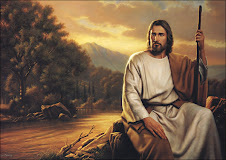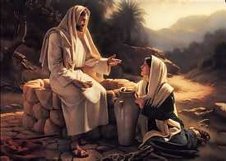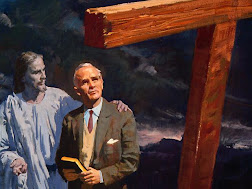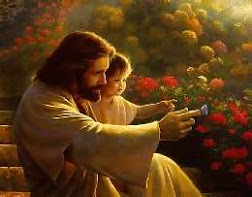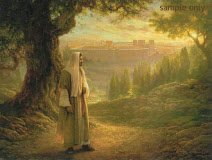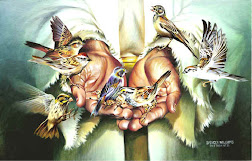Baptism, as a whole, in this day in time, is defined and practiced many ways. In the days before Christ, and even John the Baptist, baptism was a ritual practiced by many diverse people for their own reasons.
"Baptism was a rite characteristic of John the Baptist's ministry (Mark 1:4, 11:30; Luke 7:29), and was imposed upon converts from the beginning of the Christian church (Acts 2:38-41, 19:3-5). Analogies to this use of water in religious ceremonies are found in the Eleusinian Mysteries in Greece, certain Babylonian religious rituals, and Jewish priestly ordinances (Num 19:7). Just prior to the Christian era proselytes from the Gentiles qualified for membership in Israel by baptism.
John the Baptist took this ceremony and adapted it as purification for the reign of the Messiah (Luke 3:3-6). By means of this rite, the people were consecrated to receive salvation; while Jesus, in submitting himself to John's ritual, was consecrated to bestow it (Matt. 3:13-15)." (Harper's Bible Dictionary, Madeleine S. Miller and J. Lane Miller, Harper & Brothers, Publishers, 1961, pg 60)
Infant Baptism
"The Bible is abundantly clear of what baptism is, who is it for, and what it accomplishes. In the Bible, only believers who had placed their faith in Christ were baptized - as a public testimony of their faith and identification with Him (Acts 2:38; Romans 6:3-4). Water baptism by immersion is a step of obedience after faith in Christ. It is a proclamation of faith in Christ, a statement of submission to Him, and an identification with His death, and resurrection.
With this in view, infant baptism is not a Biblical practice. An infant cannot place his or her faith in Christ. An infant cannot make a conscious decision to obey Christ. An infant cannot understand what water baptism symbolizes. The Bible does not record any infants being baptized." (www.gotquestions.org/infant-baptism.html)
Youth Baptism
"As a child matures in his faith and it is evident that he is truly born again, the father and/or mother should be perceptive as to when he is ready to receive such teaching. The spiritual maturity level of one child differs from that of another even in the same family.
Although this is an Old Testament story, the truth is still applicable. In Nehemiah 8:1-8, we read the account of Ezra, the scribe, reading the law to the people of Israel. He read it to the men and women and all who were able to understand. From 10:28 we learn that these included their sons and daughters. See also 8:8 for the same meaning. And so it must be today. It is most important that our children understand spiritual truths, and only wise Christian parents can discern when that time comes.
In many churches, when the parents of a child make it known to the pastor that he/she is wanting to be baptized, the pastor speaks with the child to decide if he/she is ready. This is a good and wise practice. It is vitally important that a child understands that neither baptism or communion saves him/her, but rather they are steps of obedience and remembrance of what Jesus did for us in providing for our salvation (Luke 22:19). (www.gotquestions.org/children-baptism-communion.html)
It is important to understand that the age of accountability is different for everyone. A child at the age of eight might not be able to understand spiritual truths just as infants are unable to understand them as well. An age requirement in order to be baptized is wrong. Every person is different in their spiritual maturity.
The museum, that is spoken of in a comment just made, has reconstructed a Christian church from the Byzantine-era. The information about the way the culture baptized at this particular era and church is not clear. However, if the Mormon church has particulars and specific facts with documentation, I'm sure everyone interested would like to see proof the LDS church has concerning youth baptisms.
"Doesn't Acts 2:38 teach that we must be baptized in order to be saved?
No. In the original Greek, Peter used the word "for" just like we use it in our everyday conversation. A child is punished for disobedience; not in order to be disobedient, but because he has been disobedient. A man arrested for stealing; not in order to steal; but because he has stolen. The same thing is true in baptism. We are baptized for the remission of sins; not to get our sins washed away, but to show that they have been washed away. A correct rendering of this passage is, "Repent all of you, and each one be baptized to declare the remission of your sins." (Answers to your Bible Questions, Charles Halff, The Christian Jew Foundation, 1972, pg 23) (italics added)
Baptism: Symbol or Requirement
Definition Clarification
LDS Leaders Define Their Concept of
JESUS CHRIST
By Sandra Tanner
"Often Mormons will say that they believe in the same Jesus as standard Christianity. However, their leaders’ definition is very different. The current president of the Mormon Church, Gordon B. Hinckley, made a very telling comment about Jesus Christ in a talk in Geneva, Switzerland, June 6, 1998. The Deseret News reported:
In bearing testimony of Jesus Christ, President Hinckley spoke of those outside the Church who say Latter-day Saints "do not believe in the traditional Christ. No, I don't. The traditional Christ of whom they speak is not the Christ of whom I speak. For the Christ of whom I speak has been revealed in this the Dispensation of the Fulness of Times.
He together with His Father, appeared to the boy Joseph smith in the year 1820, and when Joseph left the grove that day, he knew more of the nature of God than all the learned ministers of the gospel of the ages." (Deseret News, Church News section, Salt Lake City, Utah, week ending June 20, 1998, p. 7)" (Utah Lighthouse Ministry)
I hope this quote helps clear up the "Trinitarian Christ vs. Traditional Christ" thing.
Food for thought
"High in the Colorado Rockies where skiers flock each winter for the runs at Vail, local churches were forced by high land prices to build an ecumenical chapel overlooking the slopes. Members of the Catholic, Lutheran, Baptist, Episcopalian, Presbyterian, Christian Science, and Jewish congregations all worship there apres-ski.
The centerpiece is a small cross fashioned out of two ski tips. When Jews hold services, the cross is easily moved aside, but when the Vail ward of the Church of Jesus Christ of Latter-day Saints applied to use the chapel for its services, the request was denied by a 7-3 vote in 1985 of the Vail Religious Foundation, which oversees the chapel.
"This is an interfaith chapel, not an intercult chapel," the Reverend Stephen A. Hoekstra, a Baptist minister, told the Rocky Mountain News."
(In Mormon Circles, 1991,Addison-Wesley Publishing Company, Inc., pp 198)
Every Member is a Missionary
Mormon President David O.McKay stated this quote above as part of his pitch while prophet of the LDS church.
"Writing in the American Journal of Sociology, (May 1980), Rodney Stark and William Sims Bainbridge traced how LDS literature instructs church members in how to use personal friendships and other contacts with Gentiles to proselytize as hove missionaries. The authors outline how leaders teach the Mormon rank and file-including new converts in foreign countries-to use their everyday encounters with Gentile neighbors to encourage conversions.
This plan starts with simple neighborliness, doing such favors as babysitting, running errands, lending tools. With each gesture, Saints are taught to reveal a new bit of the Mormon lifestyle and faith. When a Gentile praises a Mormon girl's performance as a babysitter, her parents reply that the church's tight family bonds make members good with children. A loaned tool comes with a brief sermon about being self-sufficient and prepared for any eventuality. Appreciation for running an errand is met with an explanation that Mormons stick together and see to one another's needs in good times and bad.
Gradually the talk moves toward doctrinal matters such as how the gospels in most Christian churches are mere fragments of a truth shattered by early church schisms and now have been restored by Joseph Smith. Stark and Bainbridge in their study, "Networks of Faith: Interpersonal Binds to Cults and Sects," observed as well that the instructions urge Mormons to shy away from discussing religion directly but rather to ease their targets toward such consideration by incrementally exposing them to LDS beliefs and practices.
It amounts to nothing more than making friends with the neighbors by doing truly friendly things and then eventually offering the new friends a chance to visit their church. The Stark and Bainbridge study compared LDS church figures form a single year (1976-77) in a state of Washington and found that even though door-to-door missionaries were winning only one convert for every thousand families they approached, the home mission method was working in a startling 50 percent of the cases.
Ordinary Mormons operate under an informal quota requiring that they bring one person per year into the church through the home missionary work. The key here isn't that every Mormon brings in a new believer each year, but that families work for many years, hipping away at their Gentile neighbors until eventually they win them over. It may take years of insinuating church ideas into a relationship based largely on talks about what to feed the children and how to fight crabgrass, but finally the targeted Gentiles come over, If it takes six years to convert a Gentile family of six, then the proselytizing Mormon family has met its quota, and the growth continues."
(In Mormon Circles, James Coates, 1991, Addison-Wesley Publishing Company, Inc., p147-148)
They'll get ya - Hook, Line, and Sinker!
"A quite different hook is used at the LDS visitors' center in downtown Mexico City where Mormon artisans have produced a beautiful nativity scene to take advantage of Mexican Catholics' special veneration of the Christmas season. Throughout the Christmas holidays, four-thousand people visit the creche each night, most of them, at least when they enter the grounds, staunch Catholics."
(In Mormon Circles, James Coates, 1991, Addison-Wesley Publishing Company, Inc., p 150)
Non-Christian Missions
"A common criticism leveled at the Mormon missionary program is that it lacks the altruistic qualities common to other Christian missions. There is virtually no effort to feed the hungry, clothe the poor, care for the sick, or adopt the orphaned. Instead resources are channeled into an inexorable quest for converts."
(In Mormon Circles, James Coates, 1991, Addison-Wesley Publishing Company, Inc., pp 150-151)



